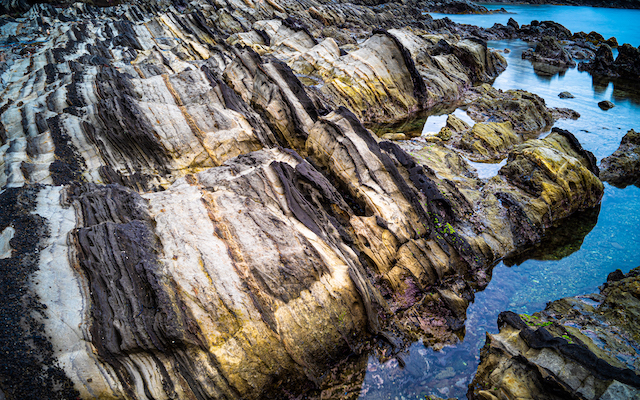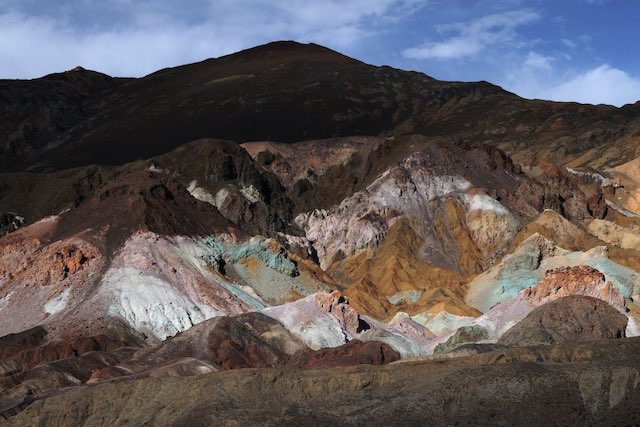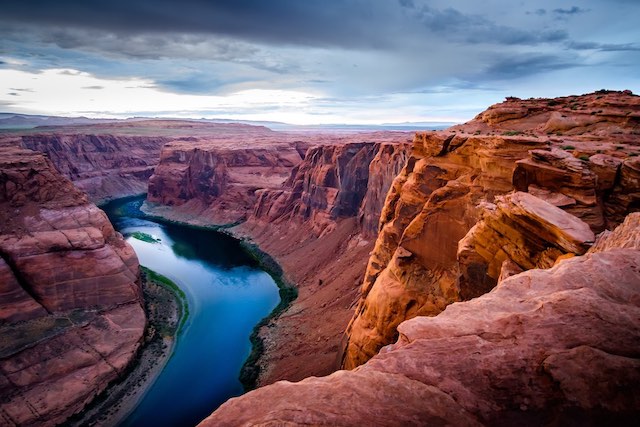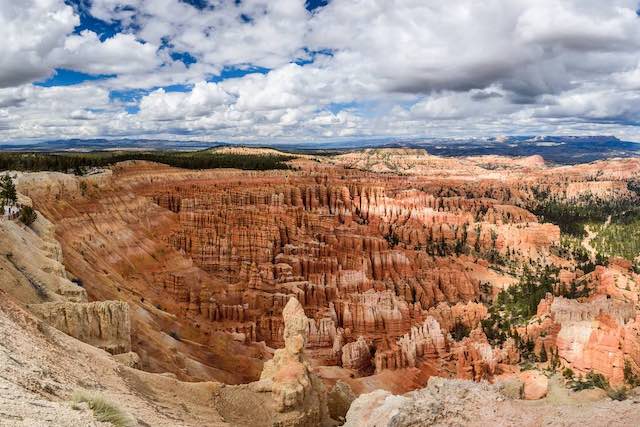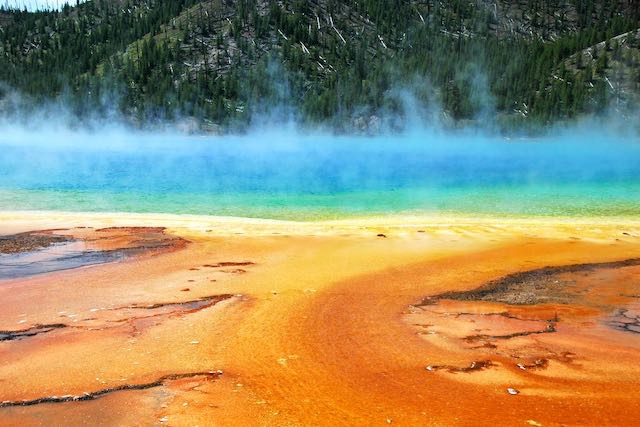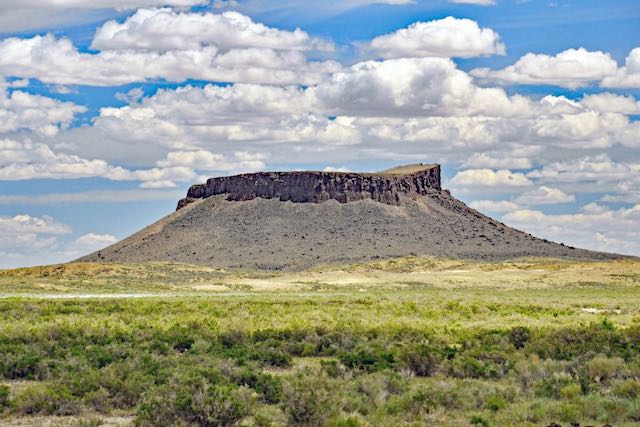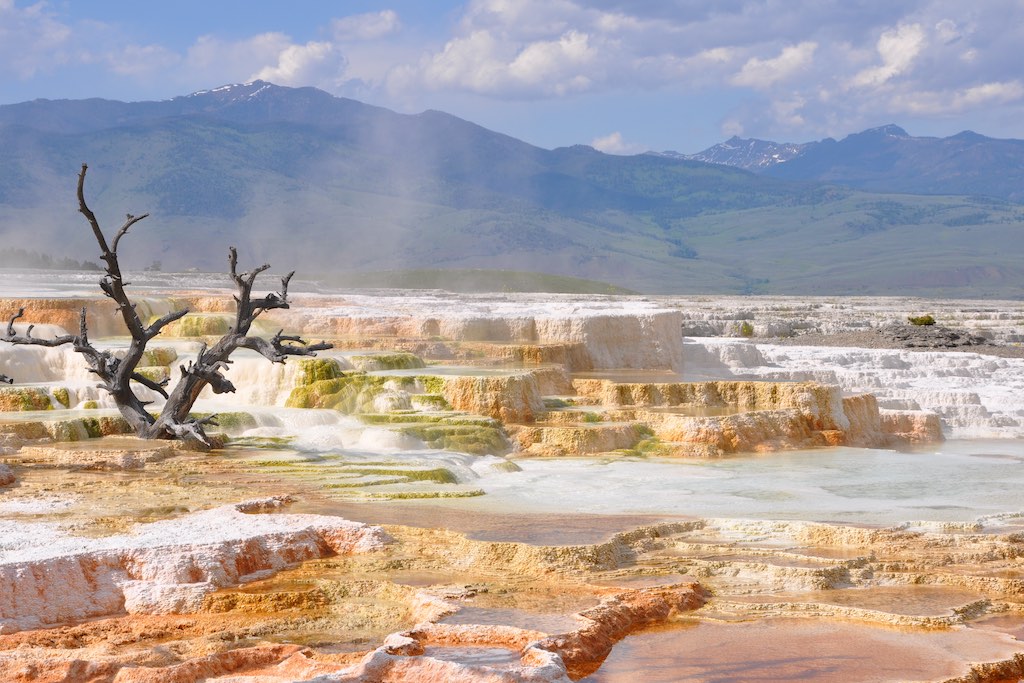
Travertine terraces overlapping each other in a stair-like formation
Yellowstone National Park stretches around the northwestern part of the state of Wyoming in the United States. The hot spring area in the photo is called Mammoth Hot Springs, and the terrace topography here is said to be the largest in the world. Calcium carbonate has precipitated over thousands of years to form these terraces of travertine.
Travertine is often found in hot spring areas, but it is not because of the hot springs. Travertine is formed because this is a limestone area.
In the area of Mammoth Hot Springs, salt water heated by magma at a depth of more than 2,400 meters underground gushes to the surface through limestone formations. As a result, the hot spring water contains a lot of calcium carbonate, a component of limestone, and as it gushes to the surface, they settle around it.
Many people think of limestone caves when they think of limestone areas, but stalactites are also a type of travertine, and their composition is also calcium carbonate. There is a difference in whether they are hot springs or not, but basically the same mechanism is used to precipitate them.
Yellowstone Volcano has the world’s largest magma reservoir
The area where Yellowstone National Park is located is the largest volcanic area in North America, and hydrothermal water (hot underground water heated by magma) gushes out from hundreds of places. The crater (caldera) of Yellowstone Volcano in the center of the park is about 60 kilometers in diameter. It is known that a large amount of carbon dioxide, as much as 45 tons, is released daily in this area.
The magma pool beneath the Yellowstone Volcano is said to be the largest in the world, with a volume of 46,000 cubic kilometers of magma at depths of 20 to 50 kilometers below the surface. The magma stored in this deep and large magma pool flows into another magma pool at a much shallower depth, and this shallow magma pool reaches just below the caldera topography.
In other words, there are two levels of magma pools at Yellowstone Volcano. The shallow magma pool is the one that produces hydrothermal fluids such as those found at Mammoth Hot Springs. The shallow magma pool is also quite large, with a volume of about 10,000 cubic kilometers of magma between 4 and 14 kilometers underground.
In fact, it was this shallow magma pool that had been known for a long time, and it was only in 2015 that the existence of the world’s largest magma pool at greater depth was revealed. In 2015, a research team from the University of Utah (Utah, USA) published a paper in the journal Science, which became the talk of the town.
The following figure is taken from Science magazine.
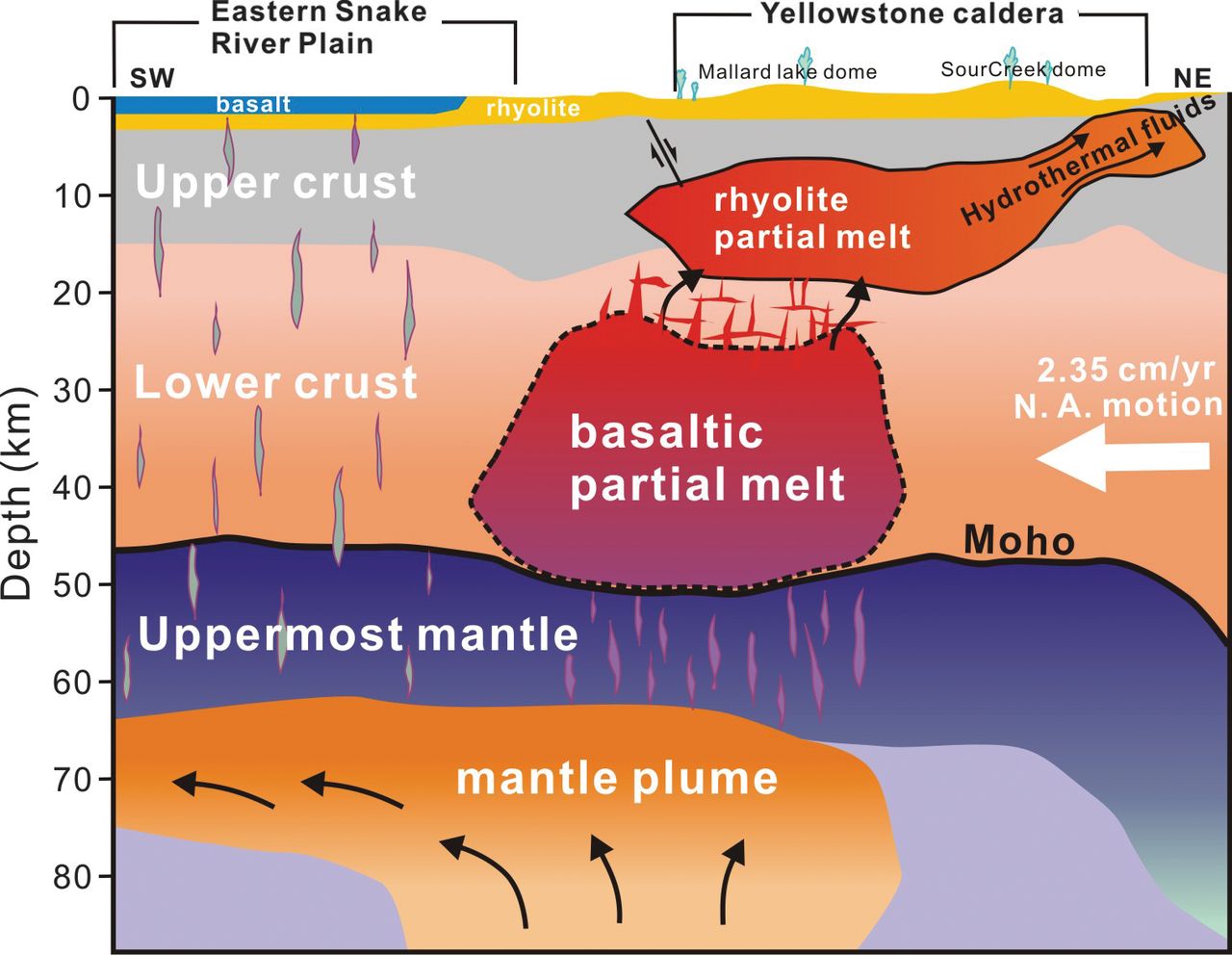
The red trapezoidal area in the middle of the figure is a huge magma reservoir at greater depths, with its lower surface reaching up to 50 kilometers below the surface. This means that the bottom of the magma pool is in contact with the mantle beneath the Earth’s crust. The dark blue band in the figure is the uppermost part of the mantle.
Three huge eruptions have occurred in the past
Surprisingly, this magma is not completely sludgy. Rather, it is a hot rock in an “almost solid” state, with only a few parts melting here and there.
In the deeper magma pools, only about 2 percent of the magma is melted. In the shallower magma pools, it is estimated to be about 9 percent (32 percent at most).
It’s surprising, isn’t it? It seems that no matter how huge the magma pool is, there is no need to worry about an eruption.
But that doesn’t mean that it won’t erupt, as evidenced by the fact that Yellowstone Volcano has a huge caldera formation.
The Yellowstone Volcano has had three huge eruptions in the past. These eruptions occurred about 2.1 million years ago, 1.3 million years ago, and 640,000 years ago. The volume of volcanic ejecta (ash, cinder, lava, etc.) from these eruptions was about 2,500 cubic kilometers, 280 cubic kilometers, and 1,000 cubic kilometers, respectively.
All of them are tremendous amounts, but the numbers alone don’t give a clear picture. Comparing the above volcanic eruptions with modern eruptions, the huge eruption 640,000 years ago is about 1,000 times larger than the eruption of Mount St. Helens (Washington, USA) in 1980.
The eruption of Mount St. Helens was a massive mountain collapse eruption that completely blew off the summit of the mountain (about 400 meters), which used to be 2,950 meters above sea level, and formed a huge crater about 800 meters deep. With such a large eruption, one can imagine that the volume of volcanic ejecta was quite large, but it was still only about one cubic kilometer.
The Yellowstone Volcano is 1,000 times larger than this. You can see that it was an incredibly huge eruption.
Mantle plume rising from 2,900 km underground
The “hot plume,” an upwelling in the mantle, supplies magma to Yellowstone volcano’s huge magma pool. Finally, I would like to briefly explain the hot plume.
The mantle is a layer of rock that ranges in depth from tens of kilometers to 2,900 kilometers and accounts for most of the Earth’s volume (about 82 percent). The thin layer of rock on top of the mantle is the crust. And below the mantle is the core, made of iron and nickel, which makes up the core of the Earth.
Large-scale convective motion in the mantle is called a “mantle plume.” There are two types of mantle plumes: a hot plume is an upward-flowing hot flow, and a cold plume is a downward-flowing cold flow. A hot plume is generated when the hot mantle, heated by the core, rises at the boundary between the mantle and the core, which is about 2,900 km below the surface.
In the basement of Yellowstone volcano, this hot plume is rising to a depth of about 60 kilometers, supplying magma to a huge magma reservoir.
Translated with DeepL.com (free version)
References
Katsuaki Watanabe (2020) Utsukushisugiru chigaku Jiten (Handbook of the Most Beautiful Geological Wonders), Tokyo: Shuwa System [published in Japanese].
H.H. Huang, F.C. Lin, B. Schmandt, J. Farrell, R.B. Smith, V.C. Tsai (2015) The Yellowstone magmatic system from the mantle plume to the upper crust. Science 348, 773-776.

